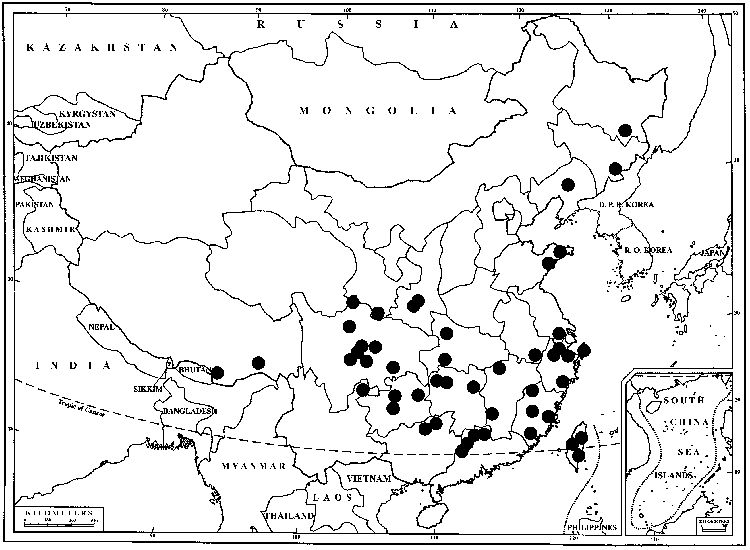Difference between revisions of "Fissidens dubius"
Prodr. Aethéogam., 57. 1805,.
FNA>Volume Importer |
FNA>Volume Importer |
||
| Line 57: | Line 57: | ||
|publication year= | |publication year= | ||
|special status= | |special status= | ||
| − | |source xml=https://jpend@bitbucket.org/aafc-mbb/fna-data-curation.git/src/ | + | |source xml=https://jpend@bitbucket.org/aafc-mbb/fna-data-curation.git/src/f6b125a955440c0872999024f038d74684f65921/coarse_grained_fna_xml/V27/V27_466.xml |
|genus=Fissidens | |genus=Fissidens | ||
|species=Fissidens dubius | |species=Fissidens dubius | ||
Revision as of 19:39, 24 September 2019
Plants to 25 × 3.5 mm. Stem usually branched; axillary hyaline nodules absent; central strand present. Leaves as many as 25 pairs, often undulate, oblong to lanceolate, obtuse to acute, often apiculate, to 3.5 × 0.7 mm; dorsal lamina truncate-rounded proximally, ending at insertion, not decurrent; vaginant laminae 2/3 the leaf length, ± unequal, minor lamina ending near margin; margin crenulate to crenulate-serrulate but unevenly serrate at leaf apex, elimbate; costa ending a few cells before apex to percurrent, taxifolius-type; laminal cells irregularly 2-stratose in dorsal and ventral laminae, ± obscure, smooth, bulging, firm-walled, rounded-hexagonal, 7–10 µm, 3–4 rows of marginal cells thinner, walls slightly thicker, forming a pale marginal band. Sexual condition dioicous; perigonia on short axillary branches and elongate stems; perichaetia on short axillary branches, mostly near proximal ends of stems. Sporophytes 1 per perchaetium. Seta to 11 mm. Capsule theca slightly inclined, slightly arcuate, bilaterally symmetric, to 1.8 mm; peristome taxifolius-type; operculum 1–1.4 mm. Calyptra cucullate, smooth, 1.8 mm. Spores 13–20 µm.
Habitat: Soil and humus, bases of trees, decaying wood, rocks and boulders in moist, shaded sites
Distribution

N.B., Nfld. and Labr. (Nfld.), N.S., Ont., Que., Ala., Alaska, Ariz., Ark., Calif., Conn., Del., Fla., Ga., Ill., Ind., Iowa, Kans., Ky., Maine, Mass., Mich., Minn., Miss., Mo., Nebr., N.H., N.Y., N.C., Okla., Pa., S.C., Tenn., Tex., Vt., Va., W.Va., Wis., Mexico, West Indies, Central America, Europe, Asia, Pacific Islands.
Discussion
In contrast to Fissidens adianthoides, F. dubius has smaller, irregularly 2-stratose, obscure laminal cells. Subterranean, irregularly globose, multicellular rhizoidal gemmae have been reported for F. dubius as well as F. osmundioides and F. taxifolius in Europe and Japan. Z. Iwatsuki and T. Suzuki (1982) cited the occurrence of dwarf male plants (small perigonial stems located on the leaves of perichaetial plants) in Japanese specimens.
Selected References
None.